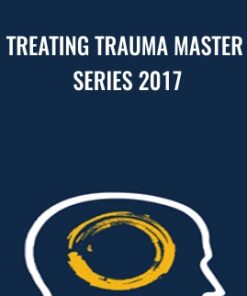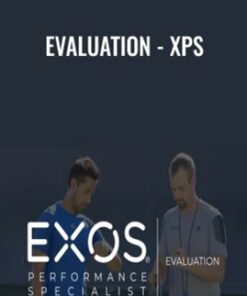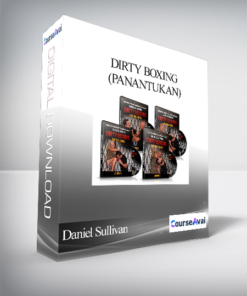Brainstorm: A Clinician’s Guide to the Changing and Challenging Adolescent Brain – Daniel J. Siegel
Question and Answer
What is New York Times bestselling author,?
New York Times bestselling author, is world-renowned neuropsychiatrist and bestselling co-author of The Whole-Brain Child, Daniel J. Siegel, M.D., helps you crack the code of the adolescent brain with groundbreaking research in interpersonal neurobiology based on his newest New York Times Bestselling book, Brainstorm: The Power and Purpose of the Teenage Brain..
How does New York Times bestselling author, crack?
New York Times bestselling author, world-renowned neuropsychiatrist and bestselling co-author of The Whole-Brain Child, Daniel J. Siegel, M.D., helps you crack the code of the adolescent brain with groundbreaking research in interpersonal neurobiology based on his newest New York Times Bestselling book, Brainstorm: The Power and Purpose of the Teenage Brain.
What is Brainstorm:?
Brainstorm: is Purchase A Clinician's Guide to the Changing and Challenging Adolescent Brain - Daniel J. Siegel courses at here with PRICE $199.99 $84 Are you struggling to effectively treat behavior disorders, anxiety, and mood disorders in children and adolescents?.
How does Brainstorm: Purchase?
Purchase Brainstorm: A Clinician's Guide to the Changing and Challenging Adolescent Brain - Daniel J. Siegel courses at here with PRICE $199.99 $84 Are you struggling to effectively treat behavior disorders, anxiety, and mood disorders in children and adolescents?
What is New York Times bestselling author,?
New York Times bestselling author, is New York Times bestselling author, world-renowned neuropsychiatrist and bestselling co-author of The Whole-Brain Child, Daniel J. Siegel, M.D., helps you crack the code of the adolescent brain with groundbreaking research in interpersonal neurobiology based on his newest New York Times Bestselling book, Brainstorm: The Power and Purpose of the Teenage Brain..
How does New York Times bestselling author, crack?
New York Times bestselling author, world-renowned neuropsychiatrist and bestselling co-author of The Whole-Brain Child, Daniel J. Siegel, M.D., helps you crack the code of the adolescent brain with groundbreaking research in interpersonal neurobiology based on his newest New York Times Bestselling book, Brainstorm: The Power and Purpose of the Teenage Brain.
What is Dr. Siegel?
Dr. Siegel is explores how brain development affects teenage behavior and relationships and how mastering this knowledge helps promote more effective psychotherapy, targeted treatment interventions and better understanding between parents and their teens..
How does Dr. Siegel explores?
Dr. Siegel explores how brain development affects teenage behavior and relationships and how mastering this knowledge helps promote more effective psychotherapy, targeted treatment interventions and better understanding between parents and their teens.
What is You?
You is will understand attachment issues in adolescents and strategies for clinical issues including, substance abuse, sexual identity, and many more!.
How does You will understand?
You will understand attachment issues in adolescents and strategies for clinical issues including, substance abuse, sexual identity, and many more!
What is adolescence?
adolescence is Rather than seeing as a period of immaturity or dysfunction, this view suggests that the essence of adolescence the emotional spark, social engagement, novelty-seeking, and creative explorations can best be harnessed by supporting these important and necessary aspects of our human development..
How does adolescence seeing?
Rather than seeing adolescence as a period of immaturity or dysfunction, this view suggests that the essence of adolescence the emotional spark, social engagement, novelty-seeking, and creative explorations can best be harnessed by supporting these important and necessary aspects of our human development.
What is Dr. Dan Siegel's?
Dr. Dan Siegel's is inside out approach to the second dozen years of life gives us an exciting new clinical perspective on the essence of adolescence..
How does Dr. Dan Siegel's out approach?
Dr. Dan Siegel's inside out approach to the second dozen years of life gives us an exciting new clinical perspective on the essence of adolescence.
What is the clinical implications?
the clinical implications is Understand of the four pillars of adolescence and discover how these pillars are a necessary set of characteristics that are essential for both the individual development and for the health and adaptation of our species..
How does the clinical implications Understand?
Understand the clinical implications of the four pillars of adolescence and discover how these pillars are a necessary set of characteristics that are essential for both the individual development and for the health and adaptation of our species.
What is These features?
These features is of the teenage brain set the stage for changes that not only shape our life as adolescents, but can surprisingly be seen as essential to thriving in adulthood..
How does These features set?
These features of the teenage brain set the stage for changes that not only shape our life as adolescents, but can surprisingly be seen as essential to thriving in adulthood.
What is we?
we is How as clinicians approach adolescence as a period and adolescents as individuals can make all the difference in how these important years are navigated well..
How does we approach?
How we as clinicians approach adolescence as a period and adolescents as individuals can make all the difference in how these important years are navigated well.
What is brain development?
brain development is Explore how affects teenage behavior and relationships, and how this informs the clinician’s choice for treatment interventions..
How does brain development Explore?
Explore how brain development affects teenage behavior and relationships, and how this informs the clinician’s choice for treatment interventions.
What is the difference?
the difference is Identify between impulsivity and hyper- rational thinking as it relates to clinical practice..
How does the difference Identify?
Identify the difference between impulsivity and hyper- rational thinking as it relates to clinical practice.
What is the 2 major components of the remodeling process?
the 2 major components of the remodeling process is List in the teenage brain, and how this informs the clinician’s choice for treatment interventions..
How does the 2 major components of the remodeling process List?
List the 2 major components of the remodeling process in the teenage brain, and how this informs the clinician’s choice for treatment interventions.
What is 3 outcomes of the changes?
3 outcomes of the changes is Name in dopamine processing in the adolescent brain, and how this informs the clinician’s choice for treatment interventions..
How does 3 outcomes of the changes Name?
Name 3 outcomes of the changes in dopamine processing in the adolescent brain, and how this informs the clinician’s choice for treatment interventions.
What is 3 neurological processes?
3 neurological processes is Describe that cause adolescent increased risk , and how this informs the clinician’s choice for treatment interventions..
How does 3 neurological processes Describe?
Describe 3 neurological processes that cause adolescent increased risk , and how this informs the clinician’s choice for treatment interventions.
What is the popular myths?
the popular myths is Dispelling of teenage behavior Cultural myths Modern scientific views The Essence of Adolescence Benefits and challenges of this important period of life How the essential elements of adolescence are the core of living a vital adult life as well The myths vs..
How does the popular myths Dispelling?
Dispelling the popular myths of teenage behavior Cultural myths Modern scientific views The Essence of Adolescence Benefits and challenges of this important period of life How the essential elements of adolescence are the core of living a vital adult life as well The myths vs.
What is modern scientific views Risk-taking,?
modern scientific views Risk-taking, is pushing-away, and sexual behavior of adolescence Adolescence is now longer than ever before, creating unique stressors The Adolescent Brain The developmental neurobiology of the adolescent period Pruning and myelination leads to the remodeling of the brain into the mid-twenties Risk-taking behaviors and the origin of hyper-rational” thinking overemphasizing the pros of a choice over the possible cons Develop gist thinking” that relies on intuition Exercises that stimulate the integrative growth of the brain Adolescence and Attachment Attachment toward parents changes during adolescence Push toward peer connections Social engagement becomes a central part of teen life Early life attachment continues to influence the adolescent’s relationships and the emerging self Move non-secure attachment models toward security Mindsight skill practices”: Mind Brain Relationships Clinical Strategies: Staying Present Through Changes and Challenges Emergence of a sexual identity and sexual relationships Romance and first love Drug use and abuse The return home of an adolescent who has already left for a period of time Other issues The most common period for the onset of serious psychiatric problems: Mood disorders Anxiety Disturbances in body image and identity Role of our cultural approach to the essence of adolescence Other issues Social media Nutrition Divorce Education Tag: Brainstorm: A Clinician's Guide to the Changing and Challenging Adolescent Brain - Daniel J. Siegel Review..
How does modern scientific views Risk-taking, pushing-away,?
modern scientific views Risk-taking, pushing-away, and sexual behavior of adolescence Adolescence is now longer than ever before, creating unique stressors The Adolescent Brain The developmental neurobiology of the adolescent period Pruning and myelination leads to the remodeling of the brain into the mid-twenties Risk-taking behaviors and the origin of hyper-rational” thinking overemphasizing the pros of a choice over the possible cons Develop gist thinking” that relies on intuition Exercises that stimulate the integrative growth of the brain Adolescence and Attachment Attachment toward parents changes during adolescence Push toward peer connections Social engagement becomes a central part of teen life Early life attachment continues to influence the adolescent’s relationships and the emerging self Move non-secure attachment models toward security Mindsight skill practices”: Mind Brain Relationships Clinical Strategies: Staying Present Through Changes and Challenges Emergence of a sexual identity and sexual relationships Romance and first love Drug use and abuse The return home of an adolescent who has already left for a period of time Other issues The most common period for the onset of serious psychiatric problems: Mood disorders Anxiety Disturbances in body image and identity Role of our cultural approach to the essence of adolescence Other issues Social media Nutrition Divorce Education Tag: Brainstorm: A Clinician's Guide to the Changing and Challenging Adolescent Brain - Daniel J. Siegel Review.
 10-Minute Spiritual Vortex Clearing - Michael Davis Golzmane
1 × $10.00
10-Minute Spiritual Vortex Clearing - Michael Davis Golzmane
1 × $10.00 Treating Trauma Master Series 2017 - NICABM
1 × $18.00
Treating Trauma Master Series 2017 - NICABM
1 × $18.00 Evaluation - XPS
1 × $45.00
Evaluation - XPS
1 × $45.00 5 Meditations that Will Make You Rich - Steven Hall
2 × $32.00
5 Meditations that Will Make You Rich - Steven Hall
2 × $32.00 Spanish for HealthCare Professionals: Intensive Online Course - Tracey Long
1 × $65.00
Spanish for HealthCare Professionals: Intensive Online Course - Tracey Long
1 × $65.00 ZonSquad Site Rip
1 × $25.00
ZonSquad Site Rip
1 × $25.00 2-Day: Bulletproof Summit: A Movement Experience
1 × $180.00
2-Day: Bulletproof Summit: A Movement Experience
1 × $180.00 Disordered Eating Behaviors: Identify and Treat the Underlying Trauma - Lori Kucharski"
1 × $85.00
Disordered Eating Behaviors: Identify and Treat the Underlying Trauma - Lori Kucharski"
1 × $85.00 Jason and Trav - The 2015 Paradise Pack
1 × $37.00
Jason and Trav - The 2015 Paradise Pack
1 × $37.00 Mastering Lab Interpretation: Deciphering the Hidden Clues - Sean G. Smith
1 × $84.00
Mastering Lab Interpretation: Deciphering the Hidden Clues - Sean G. Smith
1 × $84.00 101 Practical Strategies for the Treatment of GAD, Panic, OCD, Social Anxiety Disorder, Phobias and Insomnia - Jennifer L. Abel
1 × $124.00
101 Practical Strategies for the Treatment of GAD, Panic, OCD, Social Anxiety Disorder, Phobias and Insomnia - Jennifer L. Abel
1 × $124.00 Daniel Sullivan - Dirty Boxing (Panantukan)
1 × $32.00
Daniel Sullivan - Dirty Boxing (Panantukan)
1 × $32.00 Code 2 Conversions - Chris Rocheleau
Code 2 Conversions - Chris Rocheleau
 10 MILLION DOLLAR SECRETS (CD and MANUALS) - DAN KENNEDY
10 MILLION DOLLAR SECRETS (CD and MANUALS) - DAN KENNEDY
 0-100k Case Study from Grant Ambrose
0-100k Case Study from Grant Ambrose
 Dan On Demand - Dan Lok
Dan On Demand - Dan Lok
 100K Factory Revolution 2017 – Aidan Booth and Steve Clayton
100K Factory Revolution 2017 – Aidan Booth and Steve Clayton